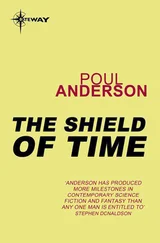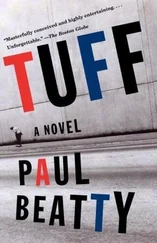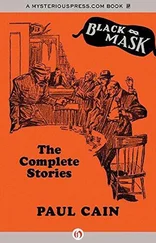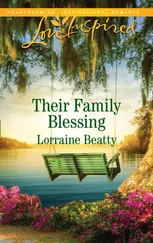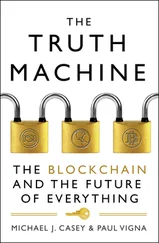I can’t say I did this without trepidation. The hospital was the one large-scale place I’d segregated where there was a decent likelihood that outsiders would see my work. Scared to proceed inside, I asked Hominy to hand me one of the fresh carrots I’d picked the night before.
“What’s up, Doc?” I teased, nibbling on the carrot tip.
“You know, massa, Bugs Bunny wasn’t nothing but Br’er Rabbit with a better agent.”
“Did the fox ever catch Br’er Rabbit, because I’m pretty sure the white boys going to catch us after this one.”
Hominy straightened the Sunshine Sammy Construction sign on the side of the truck, then grabbed the paint cans and two brushes from the back.
“Massa, if any white people do come through here and see this shit, they going to think what they always think, These niggers crazy, and carry on about they business.”
A few years ago, before the Internet, before the hip-hop, the spoken-word poetry, the Kara Walker silhouettes, I’d have been inclined to agree with him. But being black ain’t what it used to be. The black experience used to come with lots of bullshit, but at least there was some fucking privacy. Our slang and debased fashion sense didn’t cross over until years after the fact. We even had our own set of top-secret sex techniques. A Negro kama sutra that got passed down on the playground, the stoop, and by drunken parents intentionally leaving the door open just a crack so “the little niggers might learn something.” But the Internet proliferation of black pornography has given anybody with a twenty-five-dollar-a-month membership pass, or a lack of regard for intellectual property rights, access to our once-idiosyncratic sexual techniques. And now, not just white women, but women of all creeds, colors, and sexual orientations, have to suffer through their partners humping them at a mile a minute and yelling, “Who owns the pussy?” every two strokes. And even though they’ve never fully appreciated Basquiat, Kathleen Battle, and Patrick Ewing — and still haven’t discovered Killer of Sheep , Lee Morgan, talcum powder, Fran Ross, or Johnny Otis — these days mainstream America’s nose is all up in our business, and I knew eventually I was fucking going to jail.
Hominy pushed me through the automatic doors. “Massa, no one gives a fuck about the hood until they give a fuck.”
* * *
Hospitals don’t have the rainbow of directional lines anymore. In the days of butterfly bandages, sutures that didn’t dissolve, and nurses without accents, the admitting nurse would hand you a manila folder and you’d follow the Red Line to Radiology, the Orange to Oncology, the Purple to Pediatrics. But at Killer King, sometimes an emergency room patient tired of waiting to be seen by a system that never seems to care, and holding a plastic cup with a severed finger swimming in long-since-melted ice or staunching the bleeding with a kitchen sponge, sometimes out of sheer boredom they’ll slip over to the glass partition and ask the triage nurse, Where does that brackish-colored line lead to? The nurse will shrug. And unable to ignore the curiosity, they set out to follow a line that took Hominy and me all night to paint, and half the next day to make sure everyone obeyed the WET PAINT signs. It’s a line that’s as close to the Yellow Brick Road as the patients will ever get.
Though there’s a touch of cornflower blue in the shade, Pantone 426 C is a strange, mysterious color. I chose it because it looks either black or brown, depending on the light, one’s height, and one’s mood. And if you follow the three-inch-wide stripe out of the waiting room, you’ll crash through two sets of double doors, make a series of sharp lefts and rights through a maze of patient-strewn corridors, and then down three flights of filthy unswept stairs until you come to a dingy inner vestibule lit by a dim red bulb. There, the painted line pitchforks into three prongs, each tine leading to the threshold of a pair of unmarked, identical double doors. The first set of doors leads to a back alley, the second to the morgue, and the third to a bank of soda pop and junk-food vending machines. I didn’t solve the racial and class inequalities in health care, but I’m told patients who travel down the brown-black road are more proactive. That when their names are finally called, the first thing they say to the attending physician is “Doctor, before you treat me, I need to know one thing. Do you give a fuck about me? I mean, do you really give a fuck?”
It used to be that to celebrate Hood Day, King Cuz and his latest crew, the Colosseum Blvd et Tu, Brute Gangster Munificent Neighborhood Crips ’n’ Shit, would roll into the territory of their archenemies, the Venice Seaside Boys, caravanning down Broadway Street, four cars and twenty fools deep, the sun at their backs, looking for action. For most of them, unless they were being carted off to jail, it was the one time during the year they left the neighborhood. But since the advent of the variable-rate home loan, most of the VSBs have been priced out of their turf by wine bars, holistic medicine shops, and edgy movie stars who’ve erected fifteen-foot-high cherrywood walls around quarter-acre bungalows turned into $2 million compounds. Now, whenever the vast majority of the Venice Seaside Boys want to “put in work” and defend their turf, they have to commute from faraway places like Palmdale and Moreno Valley. And it’s no fun anymore when your enemy refuses to fight back. Not for lack of bravery or ammunition, but from fatigue. Too tired from fighting three hours of freeway traffic and road closures to pull the trigger. So now the two once-rival hoods celebrate Hood Day by staging their version of a Civil War reenactment. They meet at the sites of the great battles of the past, fire blanks and Roman candles at each other while innocent sidewalk café civilians duck and run for cover. They pile out of their hot rods and hoopties, and like frat boys playing a rough game of two-hand touch in the mud, the misbegotten sons of the Westside chase each other up and down the Venice Beach boardwalk, paying homage to the rumbles of old by “squabbing,” throwing blows from the shoulder, as they act out and relive the gang fights that changed history: the Battle of Shenandoah Street, the Lincoln Boulevard Skirmish, and the infamous Massacre at Los Amigos Park. Afterward they meet up with friends and family at the rec center, a demilitarized softball field in the middle of town, and reaffirm the peace over a barbecue and beer.
Unlike all the police departments who credit “zero tolerance” policies for every dip in the crime rate, I don’t want to simply assume my six-month campaign of localized apartheid had everything to do with the relative calm Dickens experienced that spring, but that year Hood Day was different. As Marpessa, Hominy, Stevie, and I plied our trade from the visitors’ dugout, we were running out of fruit slices much quicker than usual. People were overpaying for eighths. Normally each gang, each hood, uses the park on the day designated to rep their “hood.” For instance, the Six-Trey Street Sniper City Killers reserve the park for June 3, because June is the sixth month of the year, and trey means three. Los Osos Negros Doce y Ocho have dibs not on December 8, like you might expect, but on August 12, because contrary to popular belief, California is cold as fuck in winter. I was at the rec center on that balmy March 15, because for the Colosseum Blvd et Tu, Brute Crips, Hood Day is the same day as the Ides of March. When else would it be?
Back in the late eighties, before the word “hood” had been appropriated to refer to any location from the upscale enclaves of the Calabasas Hills, Shaker Heights, and the Upper East Side to the student zoo at your state university, when a Los Angeleno mentioned the hood, as in “I’d watch that motherfucker if I were you. He or she’s from the hood!” or “I know I didn’t visit Abuela Silvia on her deathbed, but what’d you expect me to do? She lives in the hood!” it referred to one place and one place only — Dickens. And there, on the rec-center baseball field, congregated under the Hood Day banner slung over the home team dugout, were gang and family members of all colors and stripes. Since the riots, Dickens, a once-united neighborhood, had balkanized into countless smaller hoods, and now, like Yugoslavia in reverse, King Cuz and Panache, the erstwhile Tito and Slobodan Milošević of the city, were celebrating the reunification by tromping across the makeshift stage in their Oakley sunglasses, their Doris Day perm curls bouncing off their broad shoulders as they rapped fiendishly to the beat.
Читать дальше

